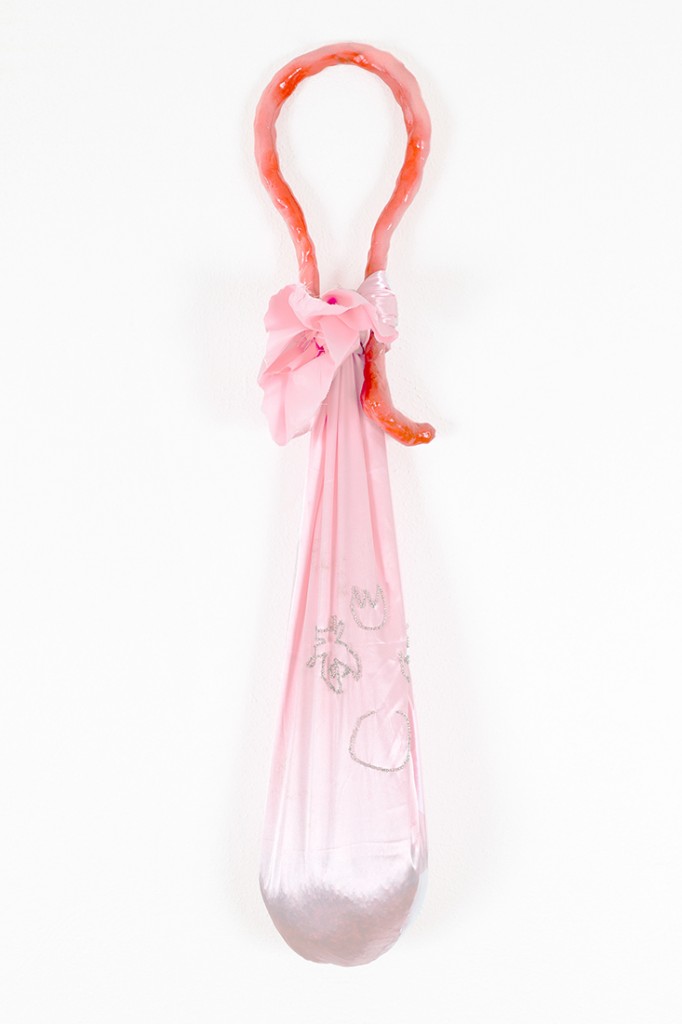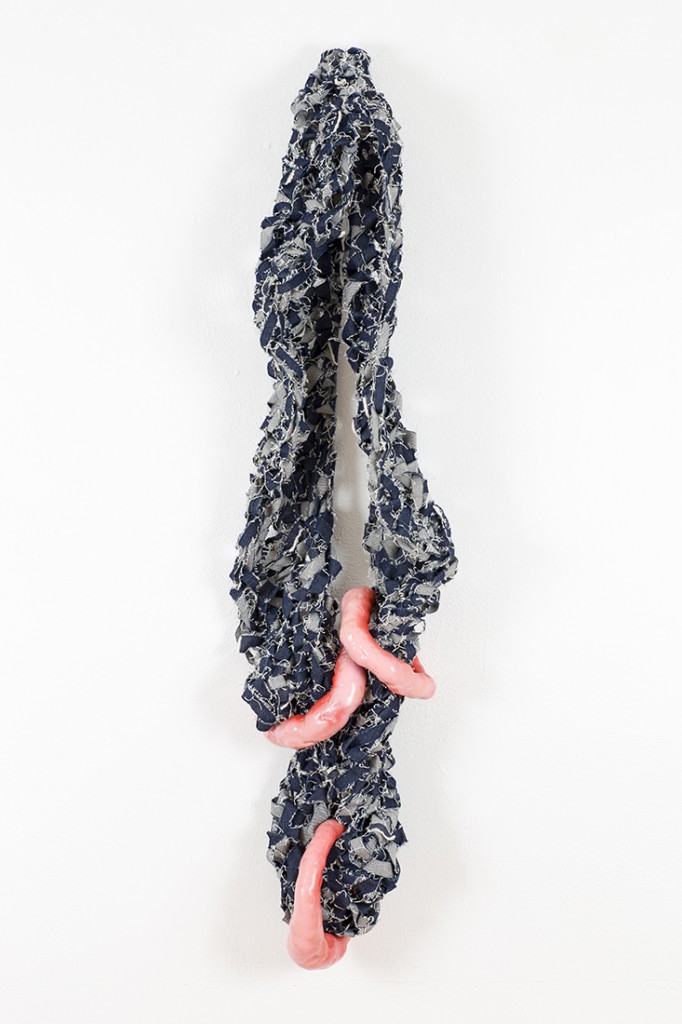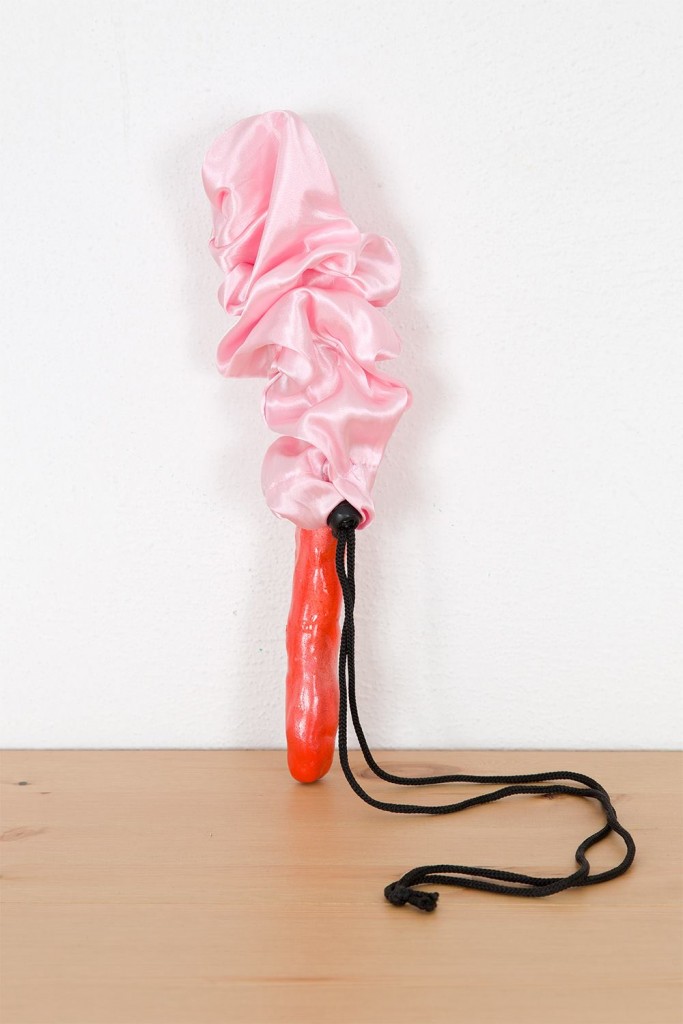Sessa Englund is a NYC-based a sculptor, textile, and installation artist. Through her choice of materials Englund explores commerce and the personal, while dismantling historical notions of the use of weaving or textile as “feminine work” and thus un-intellectual versus painting as “masculine work” and thus divinely inspired and intellectual. She has been featured in the New York Times, Hyperallergic, Art F City, Ffffffwalls, Gallery Travels, ARTFUSE, The Daily Dot, Paper Jam, Bushwick Daily, The Wrong Biennale, Chashama, Nojesguiden Sweden, Salon Zurcher – FIAC fair, and more. I was lucky to have the opportunity to speak with her about her artistic practice below:
“I like making objects that can kind of use the buyer or the wearer as a host: the full reveal of the pieces is something that only gradually becomes apparent after the buyer has already appropriated that piece into their life.”
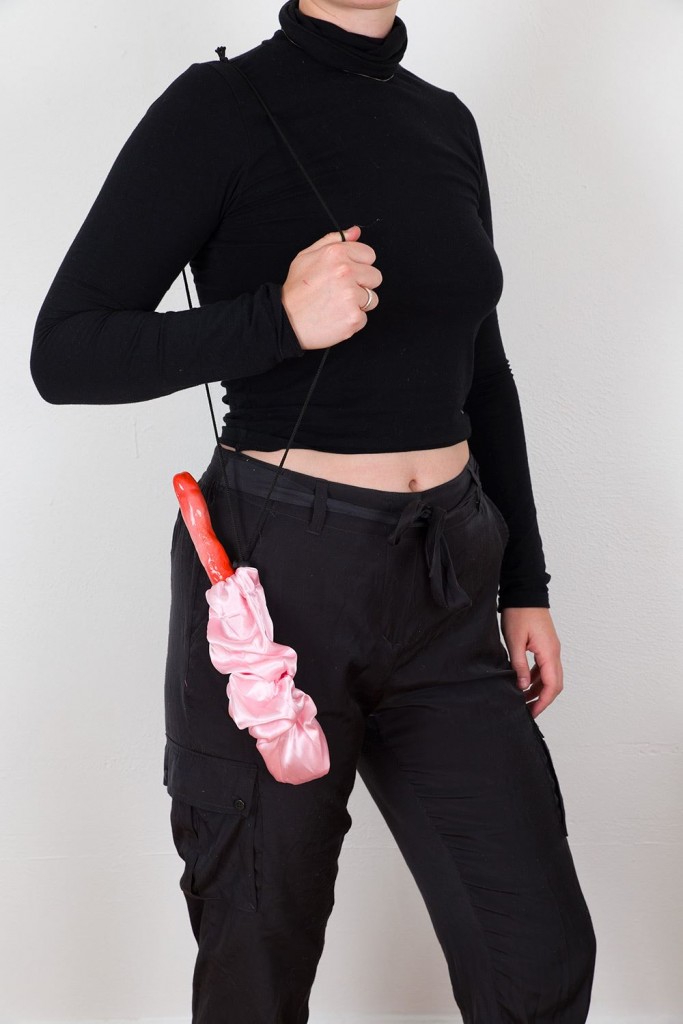
Your CV states you studied Design, Art History, and Painting. Do you feel that your knowledge of Art History has a direct impact on your work and choice of medium(s)?
Definitely, my studies in Art History informs so much of what I do. I am interested in the Medieval – early Renaissance period of art history where the hierarchy between various artistic (as we today would call artistic) production methods and materials started to shift, and the idea of the artist as embodying an independent creativity (still through being divinely inspired though) starts to create what will later become our modern ideas around what art and creativity are. How this is still present in our hierarchical value systems today is interesting, like painting being considered intellectual, and weaving or textile work as not intellectual or more rudimentary. This notion can be traced back to this period and the way western society viewed women as unable to embody creativity in any form. I think the ideas around hierarchy and gender are interesting and have definitely effected me in my personal home life (the men in my family being a painters and architects, and the women in my family being tailors and textile artists). More and more this is playing a huge role in my choice of materials and execution of ideas.
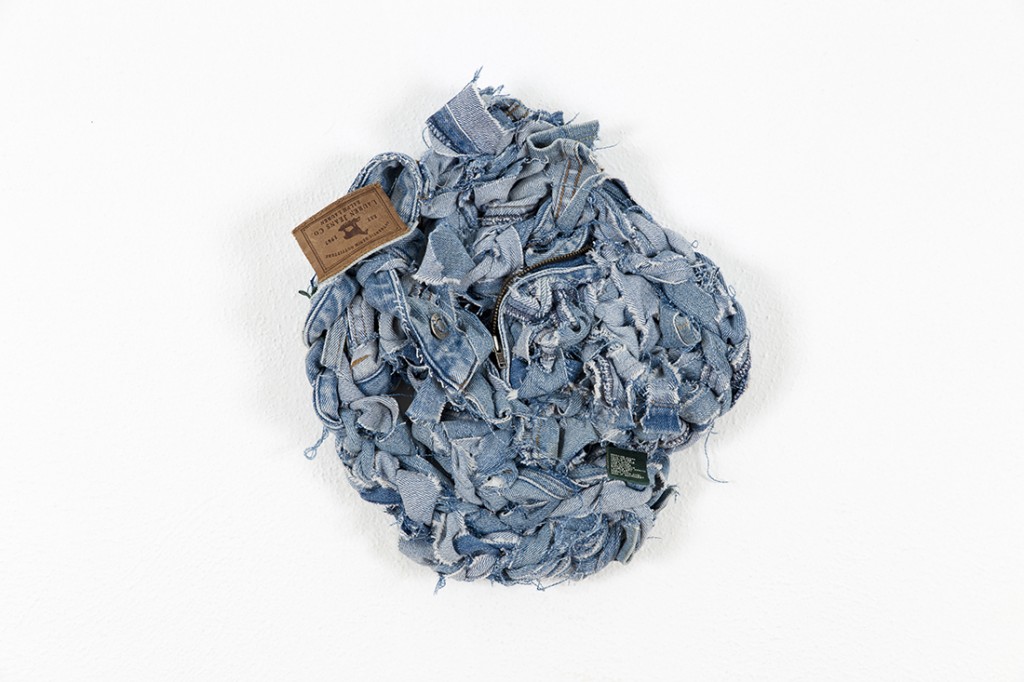 When we were chatting I believe you mentioned that many people interpret your work as explicitly sexual but you don’t see it that way. How would you describe your work, overall, or is that not possible?
When we were chatting I believe you mentioned that many people interpret your work as explicitly sexual but you don’t see it that way. How would you describe your work, overall, or is that not possible?
I think that it is perhaps difficult to work with gender and the body and not have half of the people who view it to just read “sex” into it. I would say that it is a 50% / 50% split really. Honestly I probably shouldn’t be talking about it because that will just maybe create expectations around it. The body in the series of work that you’re referring to is abstract, and people can and will read into that whatever they want. But recently people have kind of been backtracking on that point, so I don’t really know if the question really related to the pieces anymore.
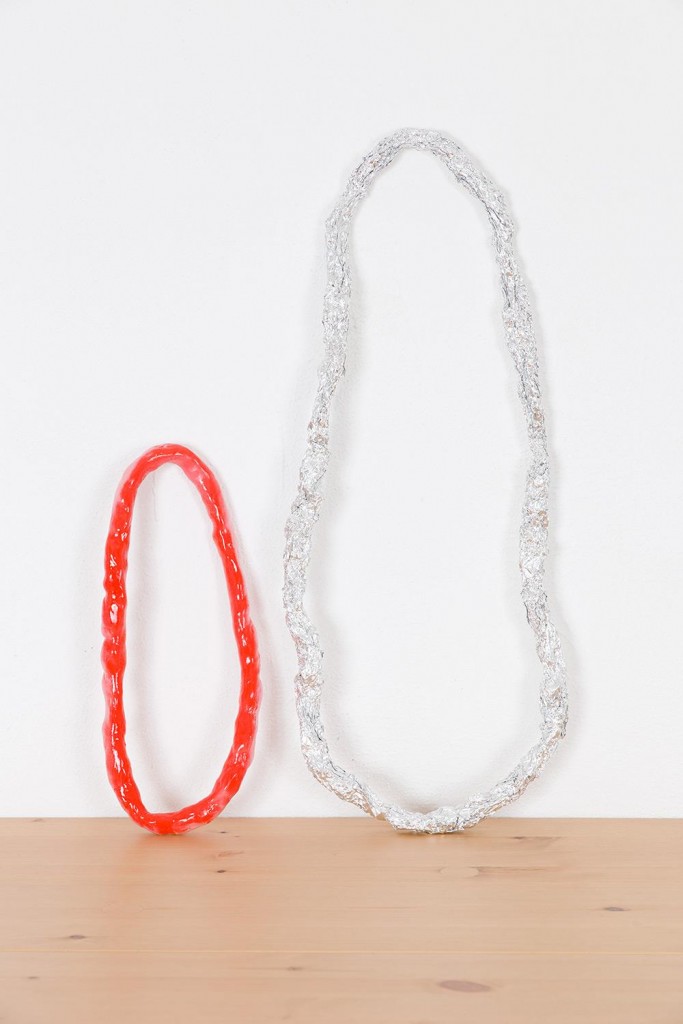 In addition to sculpture, you also create wearable fashion and installations, notably your pseudo pop-up store at City Bird Gallery this year, that clearly reference pop culture, the internet, and capitalism. Can you tell us more about the themes you choose to explore and why?
In addition to sculpture, you also create wearable fashion and installations, notably your pseudo pop-up store at City Bird Gallery this year, that clearly reference pop culture, the internet, and capitalism. Can you tell us more about the themes you choose to explore and why?
I kind of view them all as sculpture in a loose sense, but that’s more just speaking from a personal point of view of how I kind of end up where I end up with my work. Commerce and the personal are two aspects that keep coming up in my work, as does themes around creative labor and especially feminine creative labor. I like pushing expectations of function and cultural relevance surrounding various creative expressions into a space that makes that object or space harder to navigate or uneasy. The wearable fashion is interesting to me because it is something that has a lot of cross over with commerce, queer history, personal politics and the history surrounding feminine labor. I also like making objects that can kind of use the buyer or the wearer as a host: the full reveal of the pieces is something that only gradually becomes apparent after the buyer has already appropriated that piece into their life. Growing up in an artist home I’ve never really had any romantic ideas surrounding art, and this is also a way to kind of show off my cynicism and to mock that in a way.
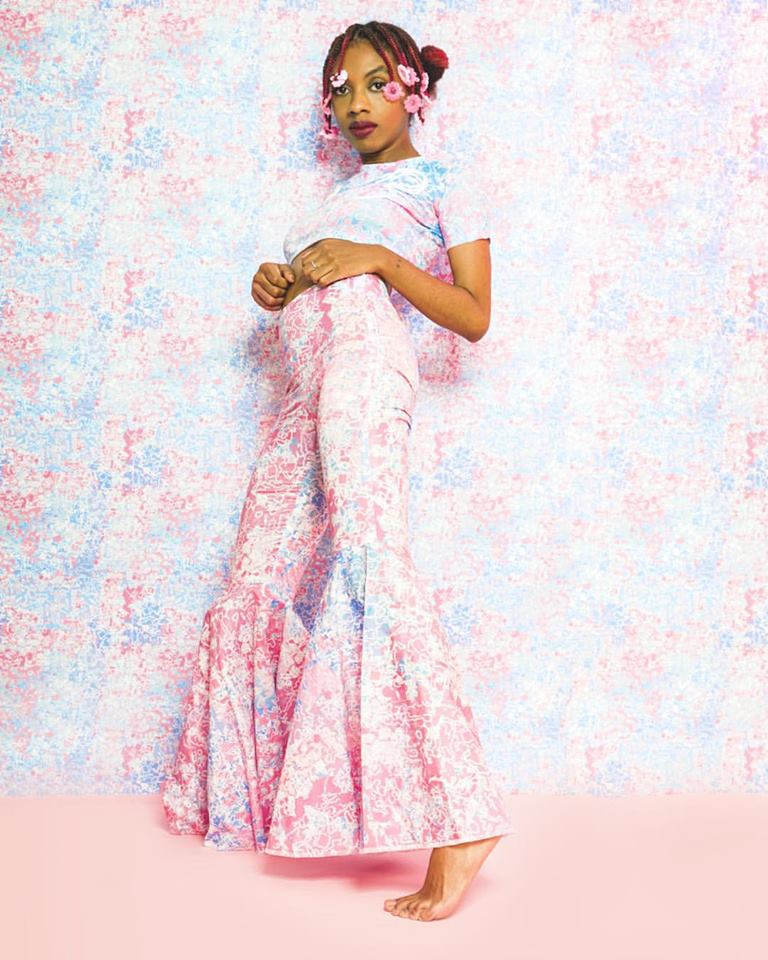 A lot of your pieces are executed through repetition (ex: sad mugs, cucumbers, etc). What draws you to create things in multiples, yet noting that you often apply subtle changes?
A lot of your pieces are executed through repetition (ex: sad mugs, cucumbers, etc). What draws you to create things in multiples, yet noting that you often apply subtle changes?
Hmm, that’s a hard one. Repetition I think has been a way of performing through my labor. A lot of the works that I do that deal with repetition are performative, and involve a degree of discipline and exertion. It involves pushing my physical limitations of production, and developing a system around production that I think speaks to my interest in creative labor as a value system. It is also a passive performance however, because it is often done in private and only the resulting product is shown to the public. I have been thinking about a series that brings the performative aspect of it to the public. It is something that I am still thinking about what the best choice for this would be, but I think acknowledging that performative aspect of the repetition in my work has kind of catalyzed some of these tendencies.
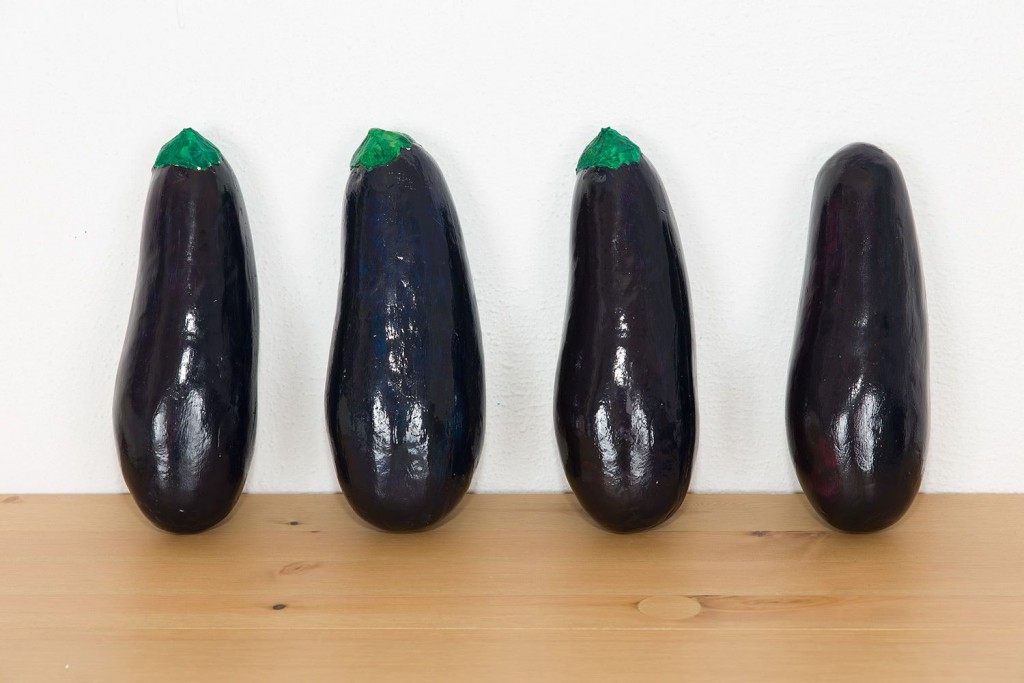 You have exhibited in many art spaces in NYC. Do you have a favorite experience or collaboration to date? If so, what made it special to you?
You have exhibited in many art spaces in NYC. Do you have a favorite experience or collaboration to date? If so, what made it special to you?
I think that working with spaces run by people who are themselves artists is always a special situation. Working with curation as well as my own art practice has just blended together at this point, and working with other people who agree with that approach makes everything more seamless. My favorite places that I have worked with, up until this point (and I might be forgetting something here), would therefore be City Bird Gallery and Firework Gallery. They’re both artist-run and they both trusted my ideas and let me do what I wanted to do, even though my ideas can seem a bit obtuse at first. Cura has been a very important collaboration for me. I’m currently working on the second show with Julian Armand Jimarez Howard, Georgia Wall and Millie Kapp, opening January at Roomservice Gallery (and I’ve been working on the project since 2013). It’s a show all about collaboration and it just takes so much effort and commitment from everyone, in a good way. Also I’ve worked with Olivia Fox on so many project now and that’s always rewarding. My latest collaboration with RAFiA and Elizabeth Renstrom on the wearable fashion is my favorite collaboration that’s still in the process of completing. What makes any of these collaborations special to me is that there is a continuation that surpasses the actual project or show: like a development in the ideas that came form that show, or that collaboration, that lives on and keeps growing.

